
From the idling speed of prehistoric times to the white-knuckle thrills of tomorrow, Epcot’s transportation pavilion has always celebrated humanity’s desire to move farther, faster. And today, we accelerate from 0 – 65 as we explore the second life of the transportation pavilion as it became home to fastest ride Walt Disney World has ever hosted.
Technologically groundbreaking, cutting-edge, and game-changing, in 1999 Epcot welcomed a new ride that would change the park forever. Kicking off a new philosophy of industrious thrills, TEST TRACK signaled a change in the wind; a falling domino that – for better or worse – redefined Epcot for a new generation.
Image: Disney
But the story behind this adored ride isn’t a drive in the park. Plagued by frazzled technologies that lead to years of disastrous delays, the true story of Test Track’s opening is a testament to Disney’s perseverance. And the story of its closure is one of forward-thinking sponsorship and adaptability. The ride you see today is so different from the 1999 original, we consider it a new installation altogether. Today, we’ll dissect the development of Test Track (which traces its roots to the 1970s) and see what riders experienced on this lost 1999 thrill ride. Then, we’ll explore what replaced it and why.
We hope you’ve visited our Lost Legends series before, where we've dissected the in-depth, full stories behind closed classics and forgotten fan favorites. Together, we’ve gone 20,000 Leagues Under the Sea to explore the sunken story of the Magic Kingdom classic, set course for the stars on the original Star Tours, braved the frozen tempest of Maelstrom, escaped the menace of JAWS, and so many more. Keep an eye out for links to Lost Legends entries across the site. But today, we turn our sights back to Epcot to pick up with the second half of a Legendary two-part entry.
Proving Grounds
As you know, EPCOT Center represented a brave model shift for Disney's designers. Doing away entirely with castles, princesses, and characters – synonymous with "Disney" at the time – the park was meant to be a living, breathing World's Fair modeled after the international expositions so influential to Disney in the decades prior. Massive themed pavilions would each focus on a single topic of industry and innovation, with deep-pocketed sponsors signing on to pay for each, keeping the pavilions constantly stocked with forward-thinking technology and continuously-refreshed rides.
General Motors – one of the "three big automakers" – was eager to partner with Disney and this brave new EPCOT Center, and as a result GM was the first company to sign on to finance a pavilion.
Image: General Motors
Even in 1976 – six years before the park opened – Disney's Imagineers were on-site at the GM Proving Grounds in Milford, Michigan to get an up-close look at prototype vehicles and the company's leading test facility. Built in 1924, the Milford Proving Grounds was a cutting-edge campus where vehicles were put up to rigorous controlled experiments in speed, maneuverability, durability, and power.
With over 130 miles of roads built to test a vehicle's response to extremes, a popular adage says that every mile tackled on the Milford Proving Ground is equivalent to five miles in the real world. Among its fabled exercises are the “Seven Sisters” course – a set of extreme lateral acceleration switchbacks – off-roading surface testing, and a 120-mile per hour banked loop speed track five lanes wide.
Image: General Motors
Extreme weather tests? Yep. Off-roading courses? Yep. Steep inclines, twisting roads, and flooded streets? Absolutely.
Of course, these extreme conditions are mere inconveniences compared to the most fabled safety test of all: the barrier crash test, wherein a vehicle packed with anthropomorphic testing devices (that's crash test dummies to the rest of us) barrels headlong into an immovable wall.
Image: General Motors
Taking a cue from what they'd seen, Imagineers way back in 1976 toyed with developing a ride where guests would "test out" prototype vehicles. As the plans grew and changed with GM's input, the idea of a more humorous and "Disney" style experience was developed: a dark ride through the history of transportation. The “vehicle test” concept was demoted to a second, minor attraction in the pavilion, then was removed entirely.
Instead, the full power of GM's influence and finance would go to support one major attraction for the pavilion: World of Motion.
Part One: World of Motion
The story of Test Track begins with a few cavemen tired of foot travel, fanning their aching and enflamed feet. No, we won't trace the development of transportation from the dawn of time to today... But Test Track's predecessor did. That's why the fascinating story of EPCOT Center's transportation pavilion really begins with a separate in-depth entry that serves as a "part one" to today's tale – Lost Legends: World of Motion traces the development of EPCOT Center (from city to theme park), examines Disney's partnership with the pavilion's sponsor General Motors, and recreates the unforgettable experience of riding through the awe-inspiring dark ride that resulted.
Image: Disney
We encourage you to catch-up in that separate in-depth entry if you haven't already, but here's what you need to know: World of Motion was an EPCOT Center original. When you think of the grand, vast, epic, educational dark rides the park offered in its earliest days – rides like Spaceship Earth or fellow Lost Legends: Journey into Imagination, Universe of Energy and Horizons – you should picture World of Motion, too. As globally-minded as EPCOT's best, World of Motion was one of the most unique rides Disney Imagineering ever designed.
Inside the circular, steel pavilion, riders would board a chain of continuously-moving Omnimover vehicles and be whisked through the history of transportation. From the dawn of man to the age of exploration, hot air balloons, and Da Vinci's flying machine.
Image: Disney
Then to the era of steam trains, the automobile, and flight. None of EPCOT's early rides would be complete with a peek into tomorrow, and World of Motion ended with a stunning finale and a one-of-a-kind look at a city of the future and the efficient Walt-approved mass-transit systems that served as its circulatory system.
But nothing great can last… Especially, evidence suggests, at Epcot. And by time the park celebrated its first decade, World of Motion was already gearing up for change.
Times Change
Let’s pick up exactly where we left off. By 1992, General Motors' 10-year sponsorship of EPCOT's transportation pavilion was up. GM had the option to renew. But their choice wasn't as simple as it may seem. General Motors reported a loss of $23.5 billion (that's billion with a b) in 1992 – at the time, the largest loss by any U.S. company ever – slashing the price of shares and putting quite a few employees out of work. Put simply, General Motors was in no position to sign on to another long-term commitment with Disney, so they didn't. Instead, they continued their support for one more year as a trial.
Image: Disney
After that year, their fortunes had improved and General Motors offered to extend their support for another decade, but with a caveat: they wanted Disney to design a new attraction for their pavilion. And rather than telling the history of transportation, this ride should focus specifically on cars. After all, an attraction that served as an embassy-showroom for General Motors and an ambassador for its vehicles would be much easier for shareholders to accept than a whimsical journey through time.
Disney approached General Motors with a fresh concept: reimagining the forgotten “vehicle test” attraction concept and pairing it with 21st century technology. The concept struck a chord. World of Motion closed forever on January 2, 1996. Just over a year later, in May 1997, a brand new thrill ride was due to take its place. That was the plan, at least… Read on…
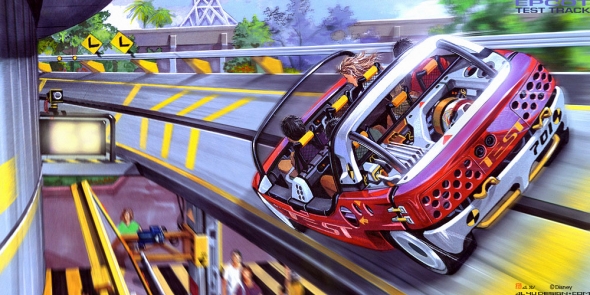

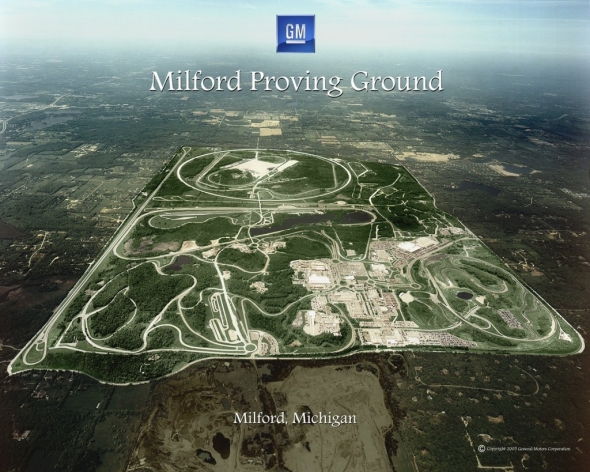
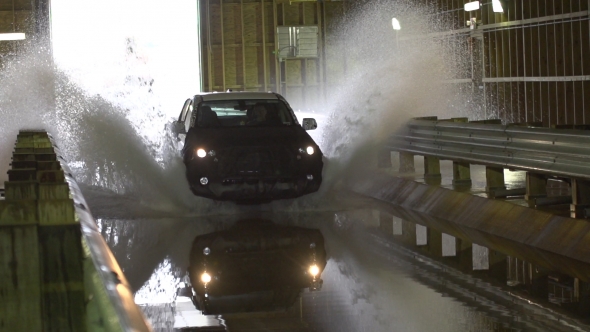
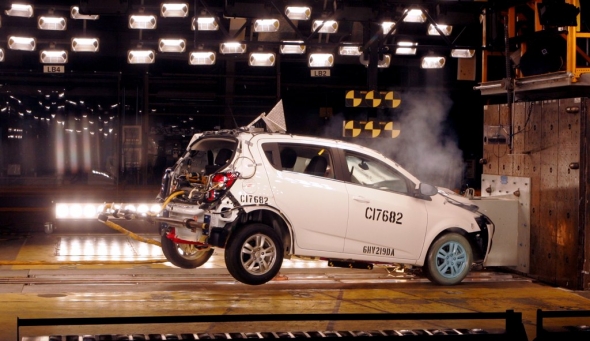
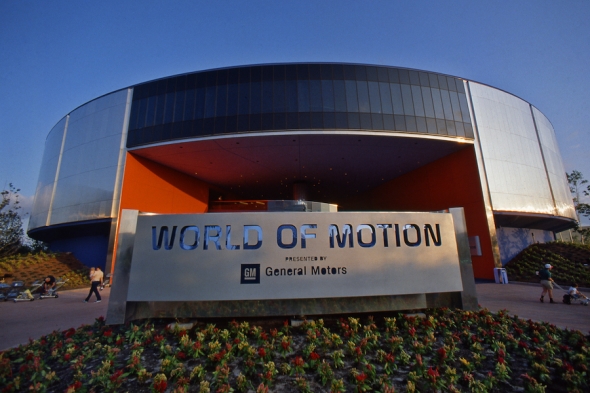
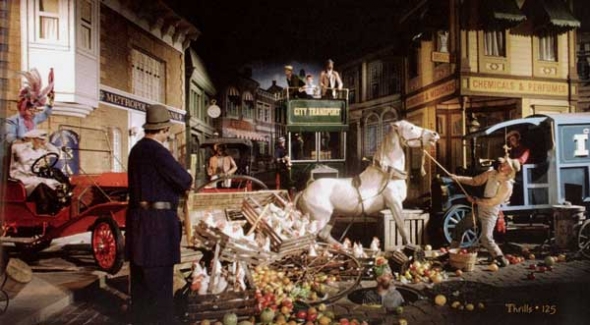
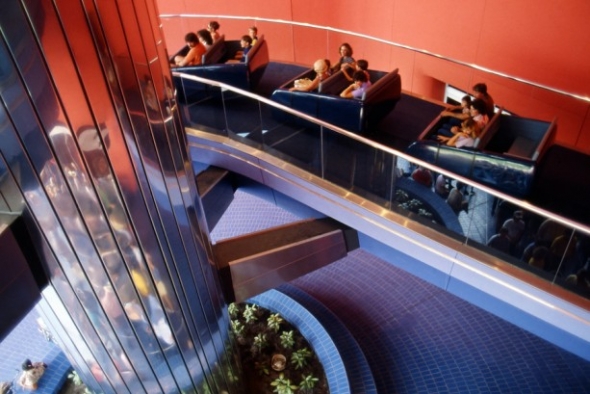

Comments
Candidly, I am shocked that anybody would find the new test track to be anywhere nearly as good as the original - let alone better
The new one is commercial and boring; the old one actually showed you more about the insides of an automaker and the track was, in my opinion 10 times better.
Have to agree. Last time I went to Disney (2014) I was baffled when I rode the test track. I felt like the old one was way more action-packed! The photos right as the acceleration hit were process.
That was an excellent article - my compliments! I only have the faintest memories of the original World of Motion, but that article dredged back memories I had long forgotten. I love reading about the history and background of these rides - EPCOT especially!
I think both versions of TT were/are pretty great. When you're discussing current/future technology, an occasional rehabilitation and update will be necessary (you can't talk about the future using a 20-year old history textbook, after all!) I think the current update is pretty secure, as they brought the ride towards a more "sci-fi" setting which ages much better. I hope they'll leave TRON out of Future World entirely, unless they can find some way to blend the fiction with a little bit of education (a la Nemo and Living Seas). TRON may be a good replacement for an Innovations wing, perhaps?